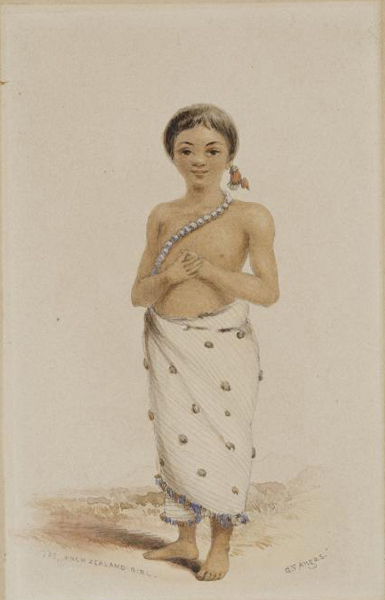Portraits of indigenous people, especially women and girls, are on one hand renderings of distant ‘realities,’ but on the other, they are exploitive and imperialistic. Many images of women with their bodies bare were created under the flag of science, knowing full well that the audience for such images expects respectable women to be clothed and exotic or uncivilized girls to be naked.

George French Angas, Tao, A New Zealand Girl, 1844. Alexander Turnbull Collection, National Library of New Zealand. Timesframes NZ.
This young Maori girl, identified as Tao, is shown smiling as if posing for a photograph. George French Angas’ ethnographic images were primarily meant to record the Maori people and traditions. This is the way they are usually understood, within the larger context of 19th century European fascination with non – European cultures during this time.
Here Tao is clothed in a woven flax cloth worn as a skirt with a string of beads or shells worn across her chest. She wears a pink flower behind her left ear, which has the connotation in French Polynesia as a married or taken female, yet it is unlikely to have any such meaning in this case.
Angas met many prominent Maori during his short travels in New Zealand. He made many portraits, recording clothing, jewelry and other artifacts of Maori life. However, as is evident in the face of Tao, he sentimentalizes and offers an image of a European in the detailed guise of a Maori girl.
